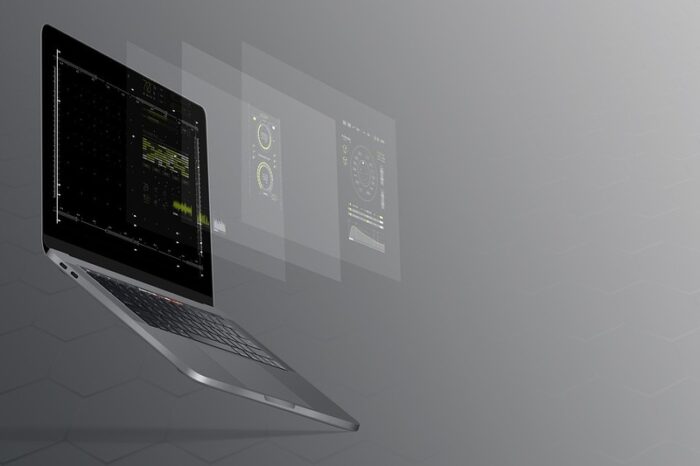Access control is a critical component of modern security strategies that helps to protect sensitive data and privacy. Only authorized users can access certain resources and information while preventing unauthorized access. Access control is achieved through various methods, such as authentication and authorization, and is essential for any business or organization that wants to secure its assets.
What is Access Control?
Access control is a crucial security practice that businesses use to safeguard their sensitive data, information, and resources. It involves restricting access to a system or application based on the user’s or device’s identity. Access control is essential for protecting sensitive data and ensuring that only authorized users can access critical resources within an organization.
In access control, authentication and authorization mechanisms ensure that only authorized users can access specific resources. Authentication is verifying a user’s or device’s identity attempting to access a system or application. This can be achieved through several means, such as passwords, biometric identification, or security tokens.
Authorization, conversely, determines what specific resources a user can access once their identity has been verified through authentication. For example, a user may be authorized to access certain files or applications but not others.
Access control is an important aspect of cybersecurity and is critical for businesses that handle sensitive data. It helps to prevent unauthorized access, data breaches, and cyber-attacks. By restricting access to sensitive information and resources, businesses can maintain high security and protect their data from potential threats.
Types of Access Control
When it comes to access control, businesses have several options. There are various access control systems, each with strengths and weaknesses. Understanding the different types of access control systems can help businesses choose the one that best suits their needs.
Role-Based Access Control (RBAC) is the organization’s most common access control system. In RBAC, resource access is granted based on the user’s organizational role. For example, an employee in the finance department would have access to financial records, while an employee in the marketing department would not. RBAC simplifies the management of access control by assigning roles to users and granting access based on those roles.
Mandatory Access Control (MAC) is another system commonly used in high-security environments such as government agencies and military installations. In MAC, access to resources is granted based on security clearance levels. This means that users with higher clearance levels can access more sensitive information than those with lower clearance levels. As a result, MAC provides a high level of security, but it can be challenging to manage and maintain.
Attribute-Based Access Control (ABAC) is a more advanced access control system that uses a set of attributes to determine access. ABAC is based on policies that define what attributes a user must have to access a resource. For example, a user may be granted access to a file only if they have the attributes “department=finance” and “clearance=secret.” ABAC provides more granular control over access than RBAC, making it ideal for complex environments with many different access requirements.
The Importance of Authentication and Authorization

Authentication and authorization are two crucial components of access control. Authentication involves confirming the identity of a user or device, while authorization determines which resources or services they can access once their identity has been verified. Both authentication and authorization play a critical role in maintaining the security of an organization’s resources and data.
Authentication can be achieved using various methods, including usernames and passwords, biometrics, smart cards, or other forms of authentication. It is essential to use a strong authentication method to prevent unauthorized access to sensitive data. Weak or easily guessable passwords are a significant security risk and can be exploited by attackers. Biometric authentication is becoming more prevalent as users seek secure, user-friendly ways to verify their identities. Methods like fingerprint scanning and facial recognition offer a promising solution.
Authorization is achieved through access control lists (ACLs), which define what users can access and cannot. ACLs are typically managed by system administrators responsible for granting and revoking access permissions as needed. It is essential to have well-defined ACLs to ensure that users can access only the resources they need to perform their job functions. This helps to prevent unauthorized access and data breaches.
Effective access control requires both strong authentication and well-defined authorization policies. Proper authentication makes it possible to verify the identity of users or devices, making it easier to enforce access control policies. However, with appropriate authorization policies, users may be able to access resources or data that they should have access to, putting the organization’s security at risk.
Balancing Access Control and Privacy
While access control is essential for protecting sensitive data, it can also be a source of privacy concerns. Users may feel uncomfortable being monitored or tracked by an access control system. Therefore, it is crucial to balance access control and privacy concerns to ensure that users feel comfortable while maintaining high security.
One way to balance access control and privacy concerns is to implement access control systems that use privacy-enhancing technologies (PETs). PETS are designed to protect users’ privacy by minimizing the amount of personal information collected and stored by the access control system. For example, access control systems can use pseudonymization techniques to replace personal data with pseudonyms, making it difficult to link the data to specific individuals.
Another way to balance access control and privacy concerns is to provide transparency about the access control system’s operation. For example, organizations can inform users about the types of data collected by the access control system, how it is used, and how it is protected. This can build trust and reassure users that their privacy is respected.
In addition, organizations can implement privacy policies that outline how user data is collected, used, and protected by the access control system. These policies can provide users with a clear understanding of their privacy rights and how the organization is committed to protecting their personal information.
Balancing access control and privacy concerns is crucial for maintaining a high level of security while ensuring that users feel comfortable and trust the access control system. Organizations can strike the right balance between access control and privacy concerns by implementing PETs, providing transparency about the system’s operation, and implementing privacy policies.
Access Control and Cybersecurity

Access control is a critical component of any cybersecurity strategy. Cybersecurity threats such as hacking, malware, and phishing attacks can compromise sensitive data and resources, leading to severe consequences for an organization. Access control measures can help prevent such attacks by limiting access to sensitive data and resources to authorized users only.
Multifactor authentication is one of the most effective access control measures for cybersecurity. It involves requiring users to provide multiple forms of identification before being granted access to a system or application. This can include a password, biometric data, or a smart card. Multi-Factor authentication provides an extra layer of protection against unauthorized access by requiring multiple forms of identification.
Regular security audits are also essential for maintaining strong access control and cybersecurity. Security audits can identify vulnerabilities in access control systems and provide recommendations for improving security. Therefore, organizations should conduct regular security audits to ensure access control systems function correctly and address any vulnerabilities promptly.
Penetration testing is another critical access control measure for cybersecurity. By mimicking the techniques cybercriminals use, penetration testing helps organizations evaluate the effectiveness of their access control measures and identify areas for improvement. This can help organizations identify weaknesses in their security and make necessary improvements to prevent cyber attacks.
Final Thoughts
Access control plays a critical role in helping organizations adhere to regulatory requirements, such as HIPAA, PCI-DSS, and GDPR. These regulations require organizations to implement specific access control measures to ensure the security and privacy of sensitive data. Therefore, access control is a critical aspect of a company’s security infrastructure, and selecting the right system can significantly impact your business’s safety and security. You can choose a system that meets your business’s specific security needs by understanding the different access control systems available and considering factors such as technology, user-friendliness, integration, budget, and support.
yAn access control system can provide various benefits, such as enhanced security, operational efficiency, liability reduction, improved productivity, and flexibility. With an access control system, you can ensure that your premises are secure, your assets are protected, and your employees and visitors are safe.
In summary, access control is a critical part of a company’s security infrastructure, and selecting the right system requires careful consideration of various factors. By choosing a system that meets your business’s unique needs, you can enjoy the benefits of enhanced security, operational efficiency, liability reduction, improved productivity, and flexibility.


